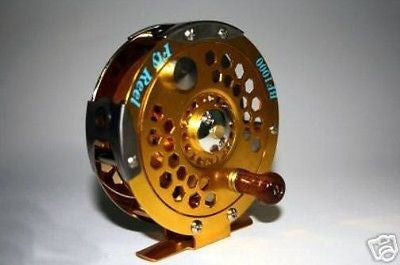Top Fishing Fly Reels For Every Angler's Adventure
Understanding Fishing Fly Reels: A Comprehensive Guide
When it comes to fly fishing, one of the most essential components of your gear is the fly reel. This crucial piece of equipment plays a pivotal role in your fishing success, influencing everything from line management to fish retrieval.
The Basics of Fishing Fly Reels
What is a Fly Reel?
A fly reel is a type of fishing reel designed specifically for fly fishing. Unlike conventional reels that use bait, fly reels are used with artificial flies and rely on line types that have different properties, such as floating or sinking.
Types of Fly Reels
There are several types of fly reels available, each serving a different purpose:
- Single Action Reels: These reels have one-to-one gear ratio, meaning that one turn of the handle equals one turn of the spool.
- Multiplying Reels: These reels allow for a higher speed of line retrieval, often beneficial when fighting larger fish.
- Automatic Reels: These are designed to automatically retrieve line, making them useful for beginners.
Choosing the Right Fishing Fly Reel
Factors to Consider
When selecting a fly reel, consider the following factors:
- Reel Weight: The weight of the reel should match the weight of the fly rod for optimal balance.
- Drag System: A smooth drag system is crucial for managing the fight with a fish.
- Material: Common materials include aluminum, alloy, and plastic. Aluminum reels are durable and corrosion-resistant.
Matching Your Fly Reel to Your Fishing Environment
Consider the waters where you will be fishing. For saltwater fishing, choose reels made of corrosion-resistant materials. Freshwater environments may allow for a wider range of materials and styles.
Maintaining Your Fishing Fly Reel
Regular Maintenance Tips
To ensure your fly reel lasts for years, follow these maintenance tips:
- Clean After Use: Rinse your reel with fresh water after using it in saltwater.
- Lubricate Moving Parts: Regularly lubricate the drag system and spool bearings to keep them functioning smoothly.
- Check for Damage: Inspect your reel regularly for any signs of wear and tear, especially before fishing trips.
Storing Your Fly Reel
Proper storage can extend the lifespan of your fly reel. Avoid leaving your reel in direct sunlight and store it in a cool, dry place.
Conclusion: Enhance Your Fly Fishing Experience
Choosing and maintaining the right fishing fly reel is paramount for any fly fishing enthusiast. By understanding the types of reels available and how to care for them, you can ensure a successful fishing experience. Happy fishing!























